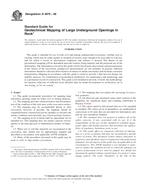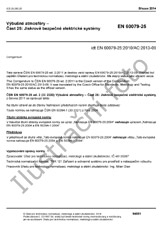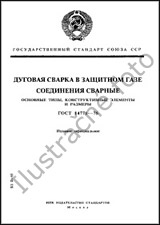Potrebujeme váš súhlas na využitie jednotlivých dát, aby sa vám okrem iného mohli ukazovať informácie týkajúce sa vašich záujmov. Súhlas udelíte kliknutím na tlačidlo „OK“.
ASTM D4879-08
Standard Guide for Geotechnical Mapping of Large Underground Openings in Rock (Withdrawn 2017)
Automaticky preložený názov:
Štandardné Sprievodca pre geotechnický mapovanie veľkých podzemných otvory v skale
NORMA vydaná dňa 1.7.2008
Informácie o norme:
Označenie normy: ASTM D4879-08
Poznámka: NEPLATNÁ
Dátum vydania normy: 1.7.2008
Kód tovaru: NS-28997
Počet strán: 12
Približná hmotnosť: 36 g (0.08 libier)
Krajina: Americká technická norma
Kategória: Technické normy ASTM
Kategórie - podobné normy:
Anotácia textu normy ASTM D4879-08 :
Keywords:
cavern design, civil underground excavations, cleavage planes, discontinuities, excavation site, face, fault zones, geotechnical mapping, mapping, mines, rock, rock mass response mapping, subsurface openings, surface analysis, underground environments, underground excavations (civil/mining), ICS Number Code 07.040 (Astronomy. Geodesy. Geography)
Doplňujúce informácie
| Significance and Use | ||||||||||||
|
The geotechnical map resulting from application of the procedures set forth in this guide is permanent documentation which may be used in the following ways: 4.1.1 Compilation of basic geotechnical information. 4.1.2 Design verification. 4.1.3 Evaluation of preconstruction assumptions. 4.1.4 Instrumentation location and data analyses. 4.1.5 Identification and location of problems and potential problems. 4.1.6 Provision of records for cost and claims adjustments. 4.1.7 Provision of information useful in future similar or nearby projects. Construction or safety considerations may limit the ability to map to the full extent of the procedures of this guide. There are significant benefits to mapping as close to the advancing face of the opening as is feasible, depending upon safety and logistical considerations. Mapping emphasis should be placed on those geotechnical features which are anticipated or are found to affect overall performance of the excavation. Dust, water, lack of light, limited exposures, or other physical factors may affect the quality of the mapping. |
||||||||||||
| 1. Scope | ||||||||||||
|
1.1 This guide recommends procedures for mapping large subsurface openings made for either civil or mining purposes. 1.2 The mapping provides characterization and documentation of the condition of the rock mass at the excavation surface. 1.3 The mapping may be accomplished during or after excavation; however, if possible, the mapping should be completed before construction activity modifies or obscures the surface condition and especially any critical geologic features. 1.4 The mapping level of detail shall be appropriate for its intended use. This mapping does not replace rigorous investigations to develop physical or mathematical models of behavior. 1.5 When soil or soil-like materials are encountered in the excavation, they should also be appropriately mapped and described in accordance with applicable ASTM standards. 1.6 Many of the procedures presented in this guide may be used, as well, to map surface excavations. 1.7 The mapping does not replace the surveying of excavation geometry. 1.8 All observed and calculated values shall conform to the guidelines for significant digits and rounding established in Practice D 6026 1.9 The values stated in inch-pound units are to be regarded as standard. The values given in parentheses are mathematical conversions to SI units that are provided for information only and are not considered standard 1.10 This standard does not purport to address all of the safety concerns, if any, associated with its use. It is the responsibility of the user of this standard to establish appropriate safety and health practices and determine the applicability of regulatory limitations prior to use. 1.11 This guide offers an organized collection of information or a series of options and does not recommend a specific course of action. This document cannot replace education or experience and should be used in conjunction with professional judgment. Not all aspects of this guide may be applicable in all circumstances. This ASTM standard is not intended to represent or replace the standard of care by which the adequacy of a given professional service must be judged, nor should this document be applied without consideration of a project's many unique aspects. The word "Standard" in the title of this document means only that the document has been approved through the ASTM consensus process. |
||||||||||||
| 2. Referenced Documents | ||||||||||||
|
Podobné normy:
NEPLATNÁ
1.10.2013
NEPLATNÁ
1.6.2012
1.7.1977
1.1.1978
1.1.1985
1.1.1985



 E DIN 18740-7:2013-1..
E DIN 18740-7:2013-1.. GOST 21667-76
GOST 21667-76
 Cookies
Cookies
